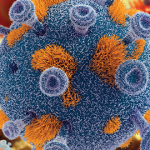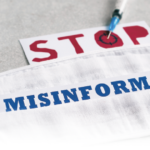NEW YORK (Reuters Health)—COVID-19-infected patients with rheumatic disease were more likely to experience respiratory failure than those without rheumatic disease, according to a retrospective study in China.
“Immune dysregulation underlying rheumatic diseases may affect the disease manifestation of COVID-19,” Dr. Jixin Zhong of Huazhong University of Science and Technology, Wuhan, tells Reuters Health by email. “Rheumatic disease-specific symptoms and tests may be useful to differentiate COVID-19-related symptoms and a flare of rheumatic disease or pre-existing interstitial lung disease caused by rheumatic disease.”
Dr. Zhong and colleagues studied 2,326 COVID-19 patients in Tongji Hospital from January to March, including 21 with rheumatic disease. Eight had rheumatoid arthritis; four had systemic lupus erythematosus; three had primary Sjogren’s syndrome; two had undifferentiated connective tissue disease; two had ankylosing spondylitis; one had polymyalgia rheumatica; and one had juvenile idiopathic arthritis.
As reported in Annals of Rheumatic Diseases, the length of hospital stay was similar between rheumatic and non-rheumatic groups, as were mortality rates (9.52% vs. 9.54%). Respiratory failure was more common in rheumatic cases, however (38% vs. 10%).1
Among patients with rheumatic diseases, fever, fatigue and diarrhea were seen in 76%, 43% and 23%, respectively. Four patients had disease flares while hospitalized, with muscle aches, back pain, joint pain or rash.
Many clinical characteristics are similar between COVID-19 and a rheumatic disease flare, including fatigue, fever, and abnormalities in laboratory tests and on CT scans, the authors note. “The presence of these symptoms may lead to a misinterpretation of rheumatic disease flare and further delay the recognition of COVID-19.”
Lymphocytopenia was seen in 57% of rheumatic patients. However, only one patient (5%) presented with leukopenia. Rheumatic patients also presented with similar radiological features of ground-glass opacity and consolidation, while those with pre-existing interstitial lung disease showed “massive fibrous stripes and crazy-paving signs at an early stage,” according to the authors.
Bibi Ayesha, MD, director of the Vasculitis Clinic and Lead of the COVID-19 Cytokine Storm Task Force at Montefiore Health System, comments in an email to Reuters Health, “Patients with autoimmune rheumatic diseases have baseline immune dysregulation … Their response to COVID-19 infection is multifactorial, and depends on the type of rheumatic disease, severity of organ system involvement, use of immunosuppressive therapy, their baseline comorbidities and the disease activity of the underlying rheumatic disease.”
“Dysregulated and excessive immune responses may result in multi-organ failure,” she says. “Further analysis is needed to understand whether treatment with immunosuppressive therapy in patients with well controlled rheumatic diseases prior to COVID-19 infection could have possibly avoided the exaggerated immune response to COVID-19 infection.”


